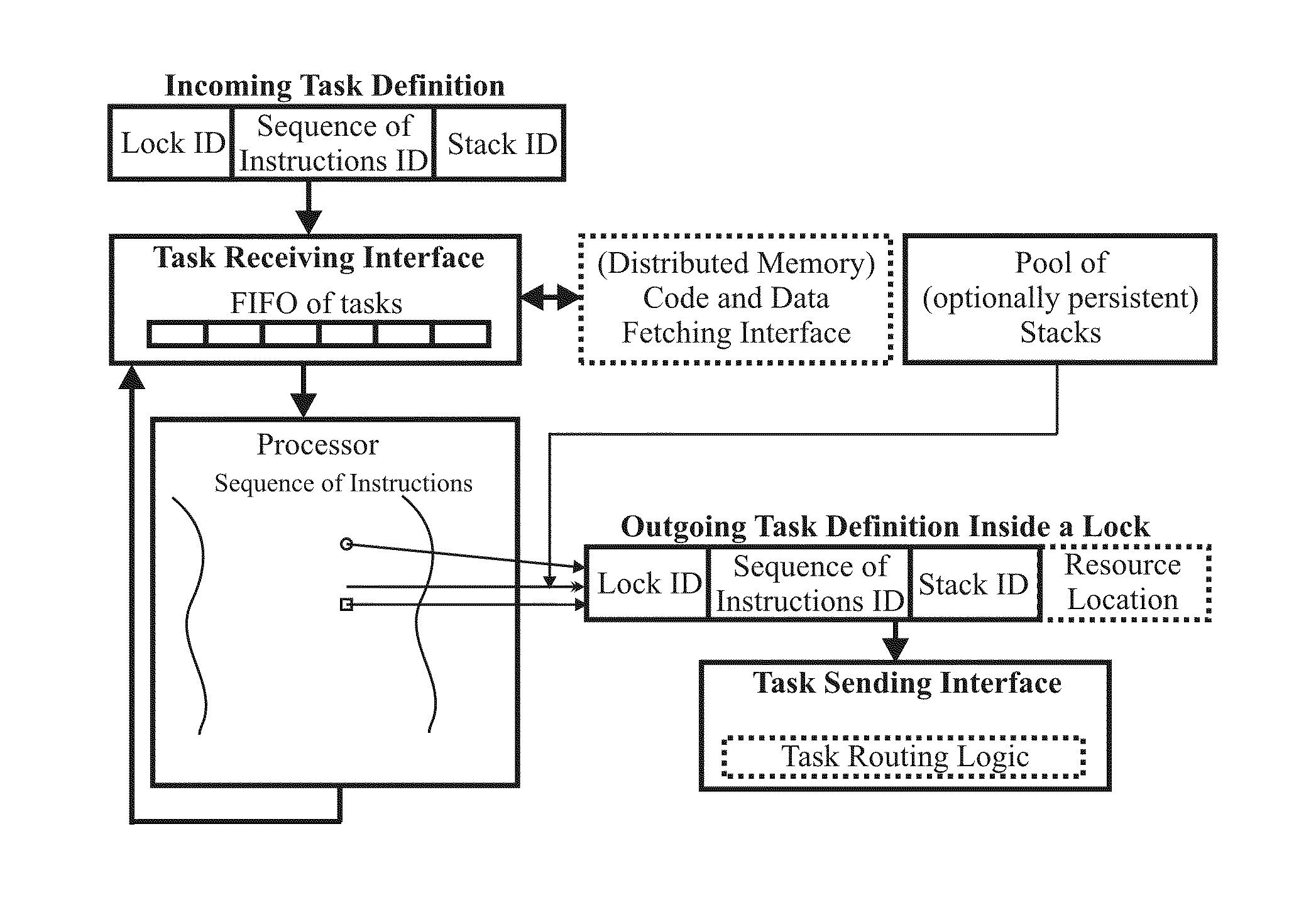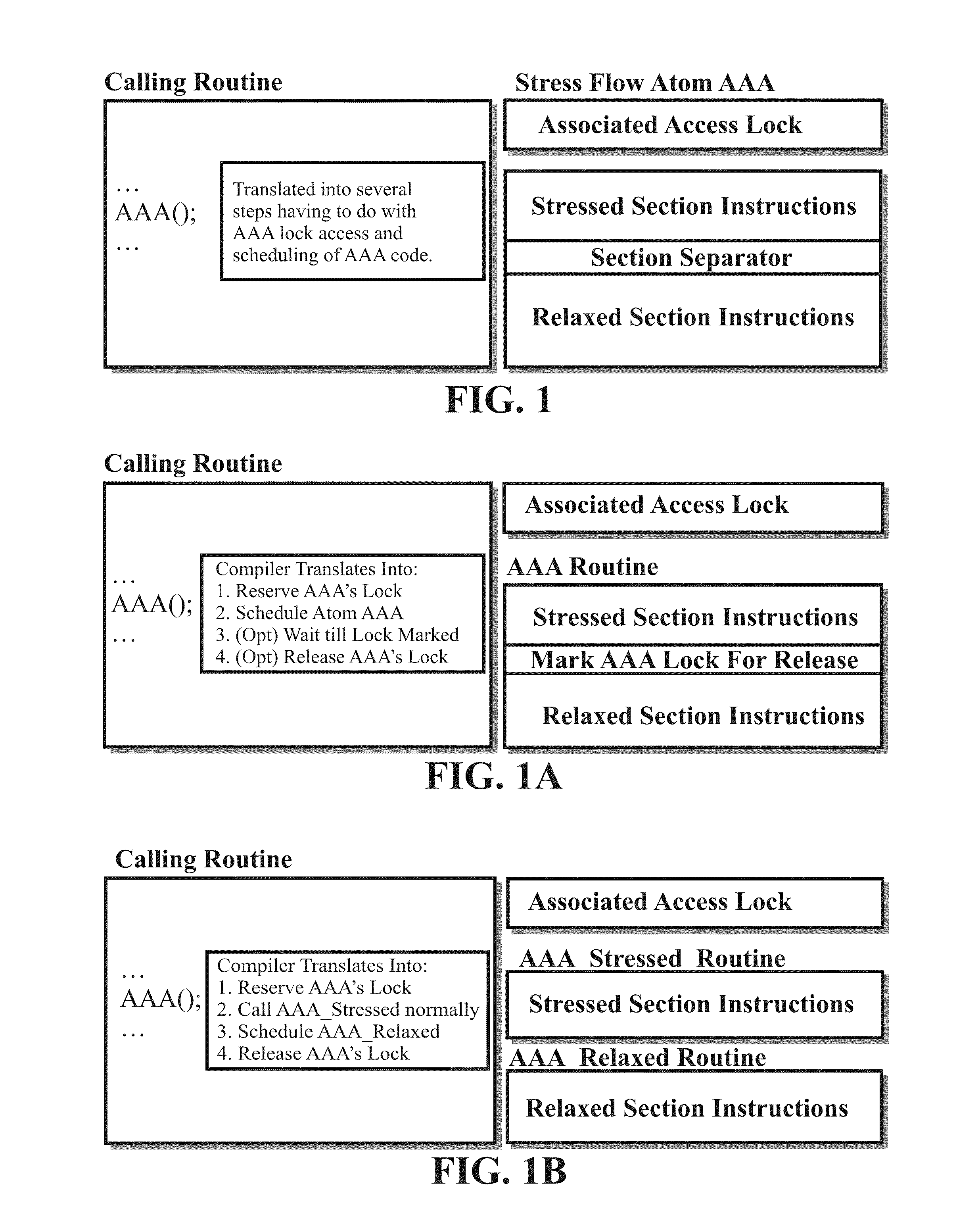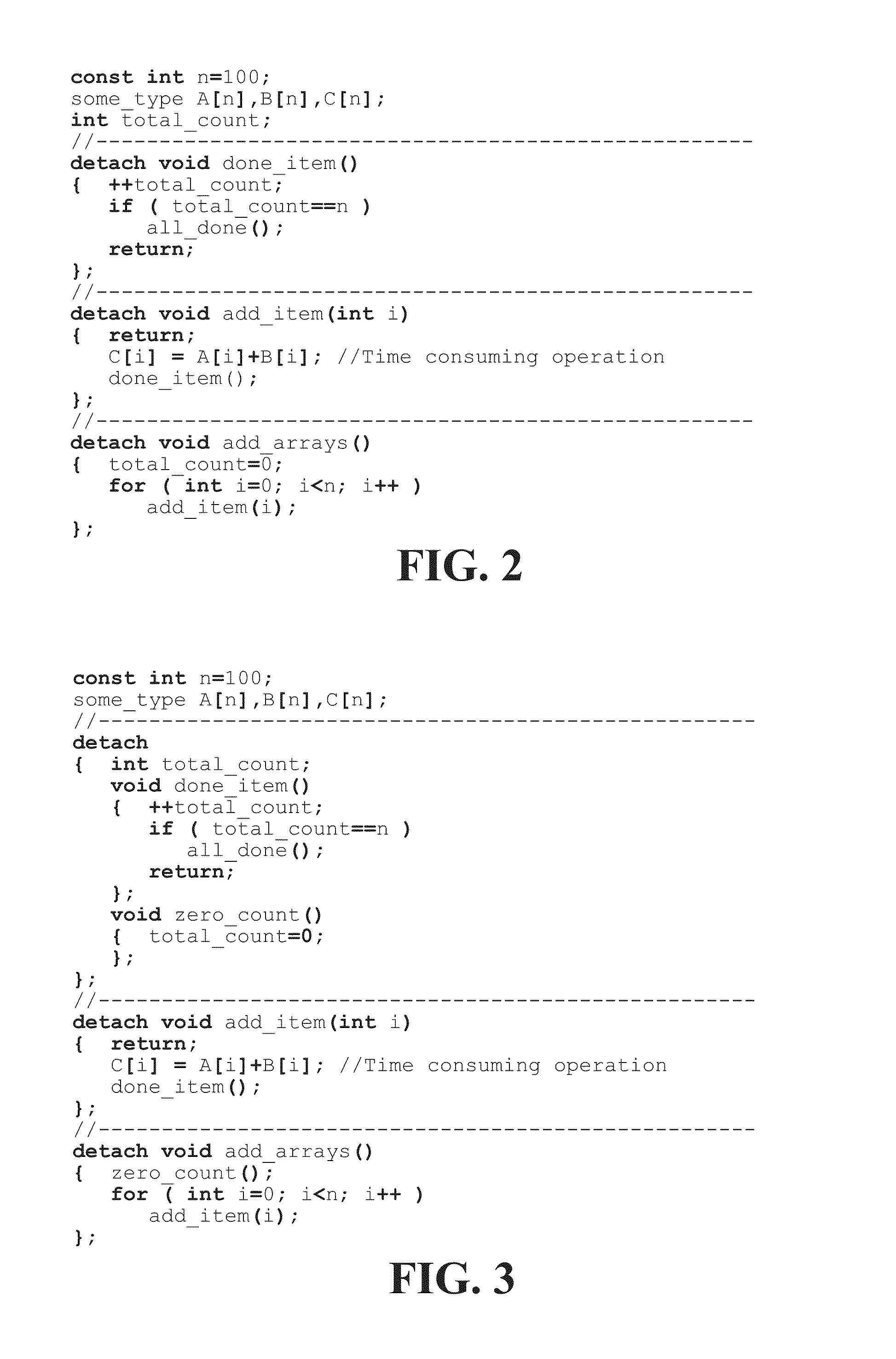Control-flow is the method used widely by the mainstream computing while data-flow method has been unable to make its way to mainstream computing and its application is currently limited to rare custom built hardware and sometimes as top
conceptual model for some multi-user and real time
software.
Data-flow method is naturally concurrent but even with this appeal was unable to overcome severe other problems with the method, chief among them the fact that data-flow as low-level
software design method does not translate well into use with common computer algorithms.
However, even the very limited applications of data-flow computing produced numerous problems with the concept.
A key problem with data-flow architecture concerned allowing unrestricted feeding of tokens (input data) into data-flow
system and letting them take the shortest rather than predefined path (so called “
dynamic data-flow”).
Such unrestricted data-flow
processing would result in mismatching result tokens arriving at destination.
Key problem with
concurrency in control-flow environment centers around simultaneously executing processes sharing the same data and with separate control sequences cooperating with one another.
Programs using the rudimentary tools are however fairly hard to construct and prone to hard to be seen and corrected conceptual problems leading to deadlocks.
The method seems very appealing but fails to address many of the problems.
In particular, in
spite of numerous attempts, the C++ standard committees had failed to agree on a universal support for parallel programming in C++.
All proposed methods were unable to get enough support to be accepted as the basis for a standard of parallel programming in C++.
In such a situation, programmers were often being forced to find their own ways to implement some parallel programming in C++ and other widely used languages.
All these prior art methods either elegantly solve only one small subset of concurrent programming needs or propose a concept that is very costly to implement in practice.
SCOOP / Eiffel Require blocks, on the other hand, while conceptually appealing, are costly / impractical to implement because they specify an expression which must be met for a concurrent procedure to begin executing.
Purely control-flow programs result in cumbersome behavior and many unacceptable features.
They cannot naturally share resources, cannot easily cooperate with each other.
However, it was by no means the true low-level parallelism sought after.
The “flow-charting” methods simply representing regular script-type instructions through
graphics did not really offer any practical advantages over script programming.
Prior to appearance of such tools, the users of
computer based instrumentation have been forced to convert essentially parallel, data-flow type concepts (such as connecting sources of voltages to displays, switches to control lights) into extremely unnatural in this case control-flow code.
However, the limitation of such near data-flow visual programming was not so much the visual programming concept itself (which is fairly universal), but the way it was implemented internally through control-flow, non-parallel code.
A single visually-designed program could not naturally run on more than one processor and multi-processor use would result in need of explicit rudimentary control tools.
However, this claim is either completely false or grossly imprecise which can be seen by studying actual details of implementation of these systems.
First of all, the centralized supervisory
software that queues and executes fired nodes that is used by these systems prevents this technique from being a universal
programming method to construct say, operating systems, data bases, or device drivers.
Second, contrary to often-repeated “hassle-free parallelism” claims made by these systems, the parallelism achieved there is not by any means an actual parallelism that is seen in, for example, data-flow computer where nodes are actual separate pieces of
electronic hardware.
This is good enough for the specific application in
instrumentation market but is by no means the actual parallelism sought by universal prior-art programming tools.
Some two-processor parallelism was achieved there at great effort, by expansions of the centralized supervisory software, but even then the parallelism offered is not able to happen in most cases without the user modifying his graphically designed software.
Third—existence of any centralized
queue or supervisory software prevents full auto-scalable parallel execution on many processors from being possible.
This already goes against the stated goals of actual parallel programming, where the entire code would naturally be parallel with many pieces executing in parallel, where breaking it into several logical parts would not improve performance.
Even if we assume that it was meant that LabVIEW™ implements a “
static data-flow”
machine where a
single node cannot be fired again until it processes the previous firing, the claim still does not make much sense.
True multi-processor parallel programming is only used for very specific, chosen time-consuming applications running on very costly and relatively rare hardware.
The problem with small use of parallel architectures is not with
electronics.
The problem is we simply still do not have a universal-purpose methodology for describing desired parallelism in general and programming such architectures with plurality of processors in particular.
This results in extremely complex circuitry using a lot of energy and dissipating a lot of heat, which is the direct result of most data having to go through “narrow
throat” of a single processor and single high-speed
bus connecting the processor with memory.
Our huge, kilowatts of energy
wasting supercomputers still cannot replicate image recognition, processing, and storing capabilities of a tiny
honey bee, for example.
 Login to View More
Login to View More  Login to View More
Login to View More 


